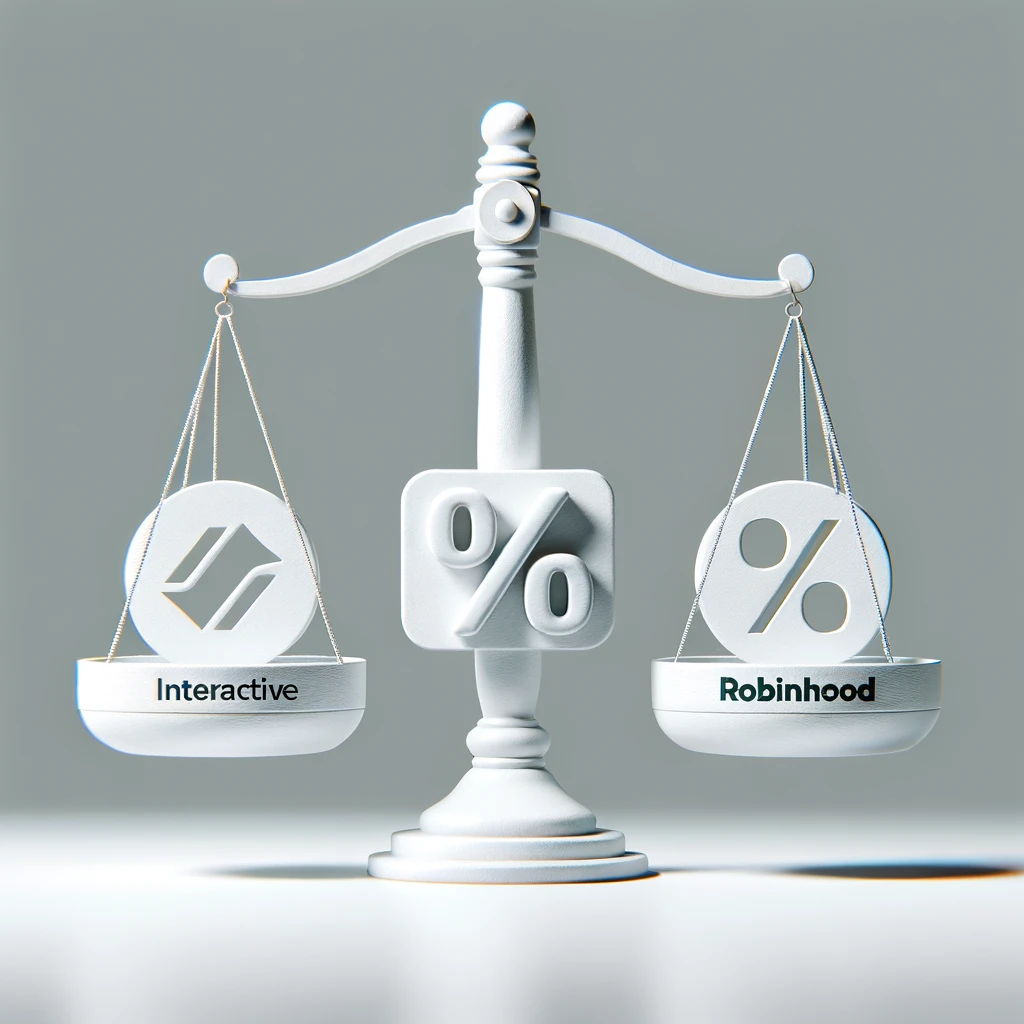Introduction
Choosing the right brokerage is crucial for maximizing your investment returns, and one key factor to consider is margin rates. In this article, we’ll compare the margin rates of two popular brokers, Interactive Brokers and Robinhood. Understanding the differences can help you make an informed decision and optimize your trading strategy.
What are Margin Rates?
Margin rates are the interest rates brokers charge on borrowed funds used to purchase securities. Lower margin rates can significantly reduce your trading costs, especially if you frequently trade on margin.
Interactive Brokers
Overview
Interactive Brokers is renowned for its advanced trading platform and competitive pricing. It caters to professional and experienced traders, offering a wide range of investment options.
Margin Rates
Interactive Brokers uses a tiered margin rate structure, which means the more you borrow, the lower the interest rate you pay. Here’s a breakdown of their margin rates as of 2024:
- First $100,000: 2.5%
- Next $900,000: 2.0%
- Above $1,000,000: 1.5%
These rates are among the lowest in the industry, making Interactive Brokers an attractive choice for high-volume traders.
Pros and Cons
Pros:
- Low margin rates, especially for large balances
- Advanced trading tools and platforms
- Wide range of investment products
Cons:
- Complex fee structure
- Steeper learning curve for beginners
Robinhood
Overview
Robinhood is known for its user-friendly app and commission-free trading. It appeals to new and casual investors with its simple, intuitive interface.
Margin Rates
Robinhood charges a flat margin rate of 5.0%, regardless of the amount borrowed. This flat rate can be beneficial for smaller accounts, but may not be as competitive for larger, high-volume traders.
Pros and Cons
Pros:
- Simple, transparent fee structure
- Easy-to-use mobile app
- Commission-free trading
Cons:
- Higher margin rates for large balances
- Limited research and advanced trading tools
Interactive Brokers vs. Robinhood: A Direct Comparison
When comparing Interactive Brokers and Robinhood, consider your trading volume and needs:
- For High-Volume Traders: Interactive Brokers’ tiered margin rates offer significant savings, making it the preferred choice for those trading large amounts on margin.
- For Casual or New Investors: Robinhood’s flat rate and user-friendly interface make it easier for beginners to get started without worrying about complex fee structures.
Conclusion
Both Interactive Brokers and Robinhood have their unique advantages. Interactive Brokers stands out with its low margin rates and advanced tools, ideal for professional traders. Meanwhile, Robinhood offers simplicity and ease of use, perfect for casual investors. Evaluate your trading style and financial goals to choose the broker that best suits your needs.
Ready to start trading? You can register at Interactive Brokers using our affiliate link. With this link you can earn up to USD 1,000 in IBKR stock (NASDAQ: IBKR).
FAQs
1. What are margin rates?
Margin rates are the interest rates brokers charge on borrowed funds used to purchase securities.
2. Which broker has lower margin rates?
Interactive Brokers generally has lower margin rates compared to Robinhood, especially for higher account balances.
3. Is Robinhood good for beginners?
Yes, Robinhood’s simple, intuitive interface makes it an excellent choice for new and casual investors.
4. Does Interactive Brokers offer commission-free trading?
No, Interactive Brokers charges commissions on trades, but offers lower margin rates and advanced trading tools.



